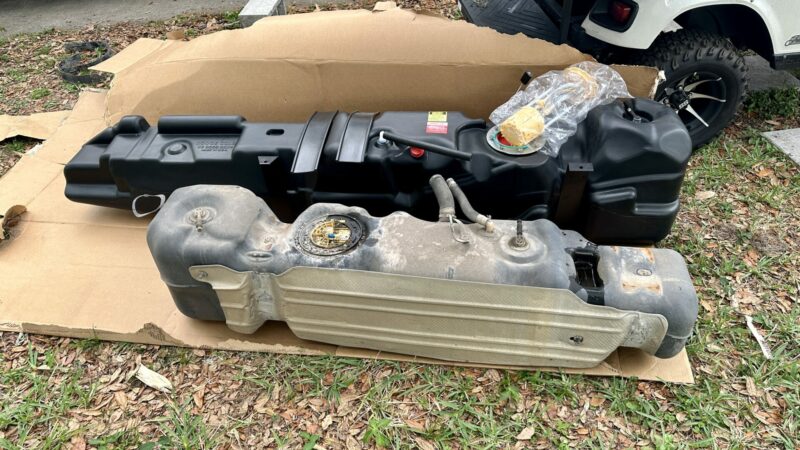Table of Contents Show
We have a love-hate relationship with fuel stops. These necessary pit stops are great for stretching your legs or using the restroom. On the other hand, they can be huge time wasters and put you behind schedule. After several exceptionally frustrating stops, we began searching for a replacement for our fuel tank.
If you’re on the fence about whether or not you should do the same, keep reading. Today, we’re sharing the pros and cons of this upgrade.
Buckle your seat belt, and let’s get started!
What Is a Replacement Fuel Tank?
A replacement fuel tank is what you think. It’s a container that replaces the original. These come in a variety of shapes, sizes, and materials. As a result, you need to confirm compatibility before purchasing. Failing to do so could cost you money or force you to use your DIY skills to make it work.
There are a variety of reasons to consider a replacement fuel tank. However, they tend to address a driver’s specific needs or concerns. These typically revolve around storage, capacity, and durability.
Ultimately, it can improve the driving experience and allow a driver to be as efficient as possible.
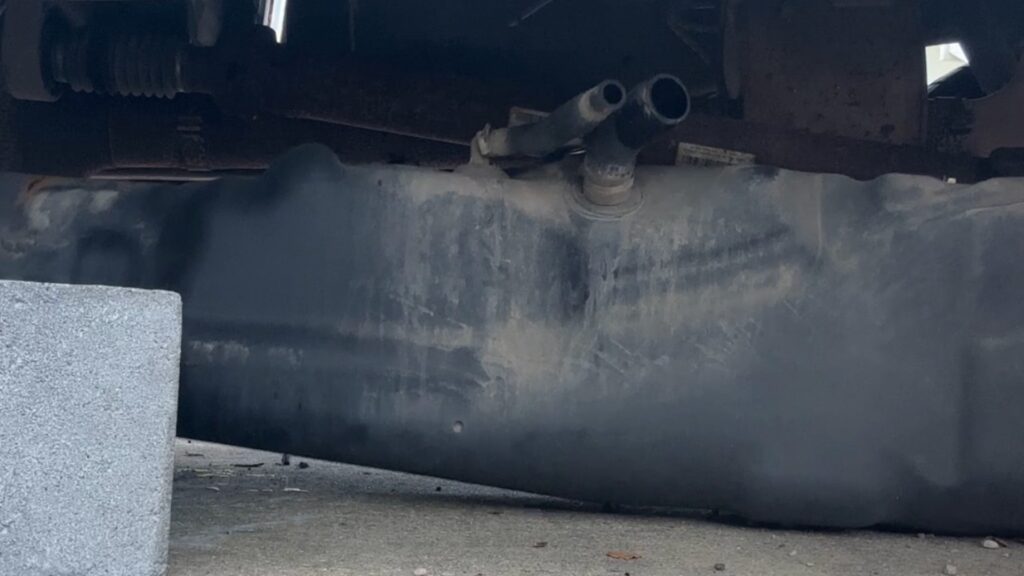
What Are Standard Fuel Tank Sizes?
Tank sizes vary considerably from vehicle to vehicle. Typically, manufacturers aim for vehicles to have a driving range between 300 and 400 miles. As a result, more efficient vehicles can have smaller tanks.
If there were an award for the smallest storage size, it’d go to motorcycles. When driven correctly, they’re incredibly efficient. It doesn’t have to be massive because they typically get over 55 miles per gallon. Most motorcycles will store between four and eight gallons, while smaller models will hold a gallon or two.
Cars and compact SUVs are generally the most efficient passenger vehicles. Because they average 30 to 40 MPG, they don’t need to store much fuel. Sizes are typically 12 to 16 gallons but can be 16 to 20 for luxury cars.
The bigger the vehicle, the larger the tank will be. Trucks and SUVs are generally the largest storage capacities. Compact SUVs and smaller trucks tend to have 12 to 18 gallons, and mid-size SUVs are 18 to 25. However, full-size SUVs and trucks can store 25 to 40 gallons.
Pros of A Replacement Fuel Tank
There are several reasons why this upgrade could be worth it. Let’s look at some of the benefits drivers enjoy from this upgrade.
Drive Longer Between Fill-Ups
It may seem like common sense, but the more you can store, the further you can drive without stopping.
This is helpful when going through remote areas where gas stations may not be readily available. We saw a remote stretch of highway in southern Utah with over 100 miles between service stations.
This can also result in significant financial savings and more flexibility. You can resupply in an area with lower prices and avoid stopping at pumps in more expensive areas.
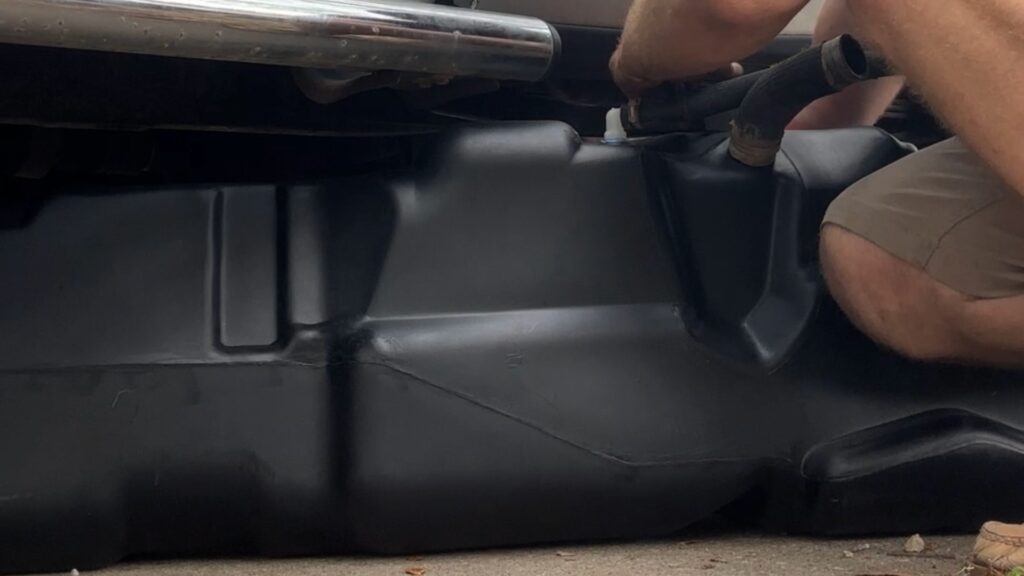
Save Space vs. Auxiliary Tank
Many owners carry auxiliary storage in the bed of their trucks. When researching, we considered this a viable option but later scratched the idea.
It’s not less effective, but it would take up precious space in our truck bed. Now having a truck camper, we’re happy with our choice to go with a replacement fuel tank.
Upgrading your storage allows you to save space in the bed of your truck. Instead of having a massive storage reservoir in the back, the larger tank gets mounted underneath your vehicle. It’s generally out of sight and out of mind.
Peace of Mind
Almost every driver has experienced anxiety watching the gauge approach the E. The “miles to empty” display counting down on your dashboard doesn’t help. Trust us; we’ve been there.
For us, it was in a remote area of Mexico. We knew we were cutting it close but thought we could make it. Luckily, we had an extra five gallons on hand for these exact situations.
Replacing your tank can give you peace of mind in these situations. With so much to worry about, having one less thing occupying your mental space is great.
Easy DIY Install
Installing a new fuel tank is a relatively simple DIY project. However, that’s only the case if you ensure it’s compatible with your vehicle. Save yourself the headache and take the time to confirm compatibility before placing your order.
All we had to do was disconnect the fuel pump and lines. Two metal straps hold the old reservoir in place, which we removed with our impact drill. Once you disconnect everything and remove it, you can reverse the process and have the new one in place.
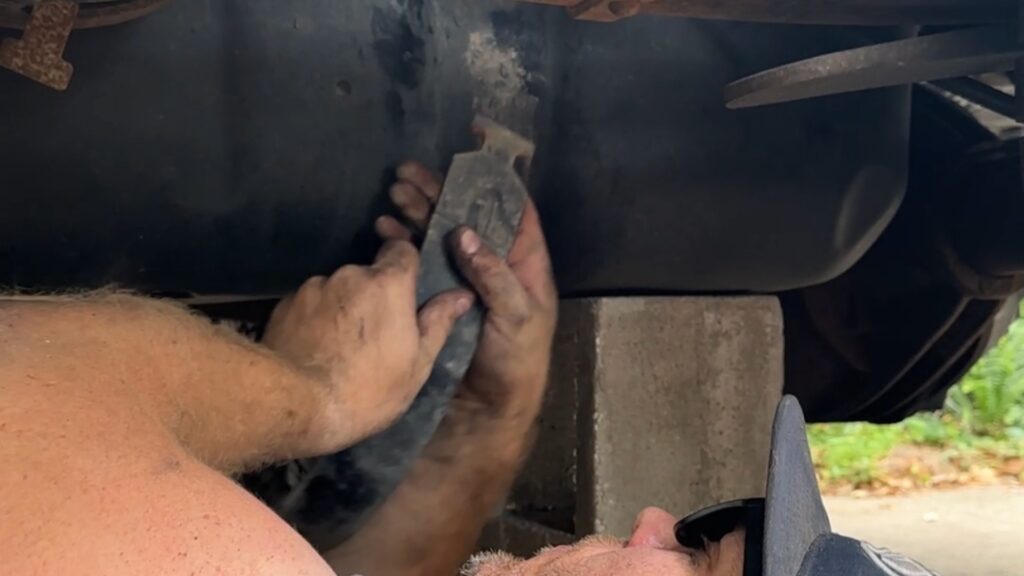
Cons of a Replacement Fuel Tank
While there are many reasons to replace your tank, there are some negative aspects to consider. Let’s look at a few of the cons of this decision.
Keep in Mind: Have you ever wondered what happens when you put Diesel in a gas tank? We have the answers!
Expensive
The expense is one of the biggest hurdles for drivers. The parts alone for a replacement fuel tank can cost more than $1,000. Again, this is why you want to ensure the purchase is compatible with your vehicle. It’s not something you can take lightly.
In addition, not everyone is comfortable doing the work themselves. Ensuring the job gets done right may require a professional, which isn’t cheap. While drivers may see the benefits, the cost is simply out of reach.
Warranty Considerations
We’ve heard of vehicle manufacturers denying warranty claims for some silly reasons. Unfortunately, adding a replacement fuel tank could void your warranty, especially if you do it yourself.
This wasn’t an issue for us as our 2012 Dodge Ram 3500 hasn’t had a warranty for some time now. However, if you’re purchasing a brand-new truck, it’s something to inquire about. It may require the dealership to do the work if you want to keep your warranty.
Keep in Mind: These important tips will help you to avoid voiding your RV warranty!
It May Require Additional Modifications
If you’ve done any upgrade projects, you know there’s always a chance of unplanned modifications. Sometimes things don’t work as planned, and you must figure it out. You may have to move and adjust parts to make them work. Unfortunately, it’s sometimes impossible to know until you get in and start doing the work.
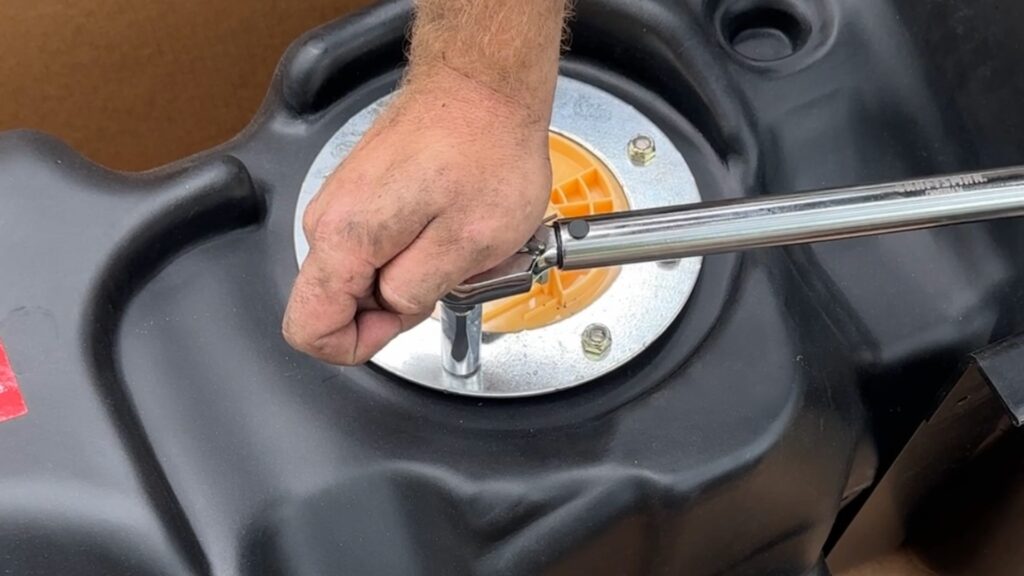
Replacing Our Fuel Tank Was a No Brainer
This upgrade was a no-brainer and something we wish we had done sooner. Sometimes, it felt like we were constantly stopped for fuel during long travel days.
While we still have to stop now, we can go much further without worrying. Consider a replacement fuel tank if you’re tired of stressing while driving!




